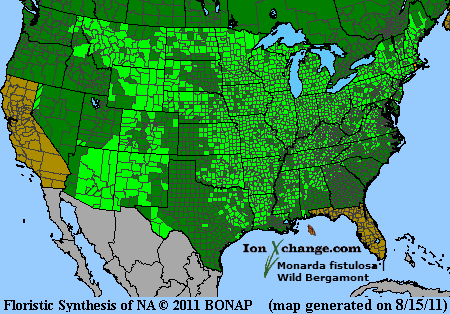 Loading... Please wait...
Loading... Please wait...- Home
- SEEDS
- SEED MIXES
- BUY PLANTS
- Info Request
-
Educational Videos
- Greenhouse Transplanting Demonstration
- Native Seed Cleaning demonstration at Ion Exchange Native Seed and Plant Nursery
- Attracting Butterflies
- Bidens - Bidens cernua Harvest Video
- Big Blue Stem Harvest
- Butterfly Milkweed Video
- Button Blazingstar - Liatris aspera Video
- Buttonbush - Cephalanthus occidentalis Video
- Canada Anemone - Anemone canadensis Harvest Video
- Cardinal Flower - Lobelia cardinalis Video
- Control Burn - Wildflower Field
- Cream Gentian - Gentiana flavida
- Culver's Root - Veronicastrum virginicum Video
- Cup Plant - Silphium perfoliatum Video
- Dormant Seeding | Planting
- Earthyman's Favorite Wildflowers Video
- Eco-Friendly Golf Course Seed Mix
- Floating Islands
- Fringed Loosestrife - Lysimachia ciliata Video
- Giant Yellow Hyssop - Agastache nepetoides Video
- Indiangrass - Sorghastrum nutans Video
- Iowa Prairie Partner Program
- Leadplant - Amorpha canescens (Potted) Video
- Meadow Blazingstar - Liatris ligulistylis
- Midland Shooting Stars - Dodecatheon meadii Video
- Native Plant Nursery Field Irrigation Experiment
- Nodding Onion - Allium cernuum Video
- Ohio spiderwort - Tradescantia ohiensis Video
- Old Man's Beard - Clematis virginiana blooms Video
- Oxeye Sunflower - Heliopsis helianthoides Video
- Prairie Spiderwort - Tradescantia bracteata
- Purple Coneflower - Echinacea purpurea Video
- Rain Garden or Water Garden Video
- Rattlesnake Master - Eryngium yuccifolium Video
- Riverbank Stabilization - Wetland Plants
- Rose Mallow - Hibiscus militaris Video
- Rosinweed - Silphium integrifolium Video
- Royal Catchfly - Silene regia
- Showy Tick Trefoil - Desmodium canadense Video
- Sneezeweed - Helenium autumnale Video
- Swamp Betony - Pedicularis lanceolata Video
- Swamp Milkweed - Asclepias incarnata Video
- Sweet Blackeyed Susan - Rudbeckia subtomentosa Video
- Tall Coreopsis - Coreopsis tripteris Video
- Urban Butterfly Garden
- Wild Bergamot - Monarda fistulosa Video
- Wild Geranium - Geranium maculatum Harvest
- Wild Goldenglow - Rudbeckia lanciniata Video
- Wild Petunia - Ruellia humilis Harvest Video
- Woodland Knotweed - Polygonum virginianum Video
- Yellow Coneflower - Ratibida pinnata Video
- Blog
- Resources
- Policies
Contact Us
Phone:
563-419-0837
or 563-535-7231
Email:
hbright@ionXchange.com
Browse Products
Add to Wish List
You Recently Viewed...
Our Newsletter
Product Description
"Wild Bergamot, Horsemint, Bee Balm"
| Sun Exposure | Prairie, Savanna |
| Soil Moisture | Wet Mesic, Mesic, Dry Mesic |
| Bloom Time |
Summer, Fall July, August, September |
| Bloom Color | Purple |
| Max Height | 4 feet |
| Wetland Code | FACU |
| Germ Code | A |
| Seeds Per Packet | 500 |
| Seeds Per Ounce | 70,000 |
Monarda named in honor of Spanish botanist, Nicolas Monardes, who wrote extensively in the 16th century about medicinal and useful plants. Fistulosa from the Latin for "like a reed or a pipe" referring to the individual flowers.
Common to the eastern and northeastern US and the central Tallgrass region on rich, moist soils. Found along the edges of woods, roadsides and old pastures. Pink to light purple flowers from July to September. Can grow to 5 feet. Typical square stem of the mint family.
Native Americans used a tea made from the leaves of Wild Bergamot to treat colic, flatulence, colds, fevers, stomachaches, nosebleeds, insomnia, heart trouble and to induce sweating in measles. Apoultice made from the leaves was used to treat headaches. Physicians once used the same leaf tea to expel worms and gas.
Edible Uses: Unknown
Medicinal Uses: Wild bergamot was often employed medicinally by several native North American Indian tribes who used it to treat a variety of complaints, but especially those connected with the digestive system. It is still sometimes used in modern herbalism.
The leaves and flowering stems are carminative, diaphoretic, diuretic and stimulant. An infusion is used internally in the treatment of colds, catarrh, headaches, gastric disorders, aching kidneys, to reduce low fevers and soothe sore throats. Externally, it is applied as a poultice to skin eruptions, cuts etc and as a wash for sore eyes. The leaves can be harvested before the plant flowers, or they can be harvested with the flowering stems. They can be used fresh or dried.
The plant contains the essential oil 'bergamot oil' which can be inhaled to treat bronchial complaints.
The leaves also contain 'thymol', an essential oil that can be used to expel gas from the digestive tract.
Other Uses: The leaves have been used as an insect repellent.
Herbal Uses: Unknown
Product Videos
-
 Wild Bergamot ...Earthyman views Wild Bergamot (Monarda fistulosa) in bloom at ...
Wild Bergamot ...Earthyman views Wild Bergamot (Monarda fistulosa) in bloom at ...














